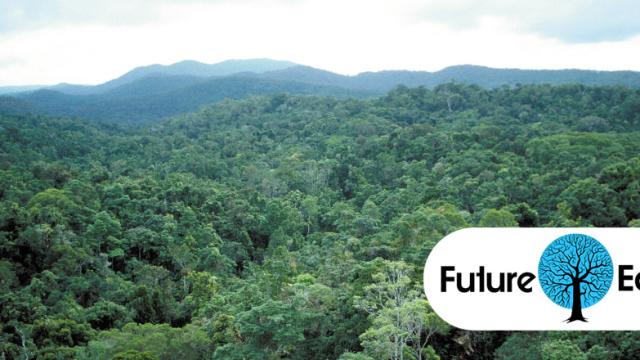In 2005, an intense heatwave struck a mountaintop rainforest in northeast Australia. Accounts of the event were rather apocalyptic: birds dropping dead out of the sky; entire patches of forest withering to a crisp. But the biggest casualty of all was a snow-white furball that scampered amongst the branches at the highest elevations. The white lemuroid ringtail possum simply vanished.
Biologists searched in vain for the possum; an iconic creature of Queensland’s Daintree rainforest. Years later, after media reports had already decreed the animal extinct, three surviving individuals were found. Last summer, an extensive field survey turned up four or five more.
The white lemuroid lives, but it faces an uncertain future. One more heat wave could wipe the stragglers out.
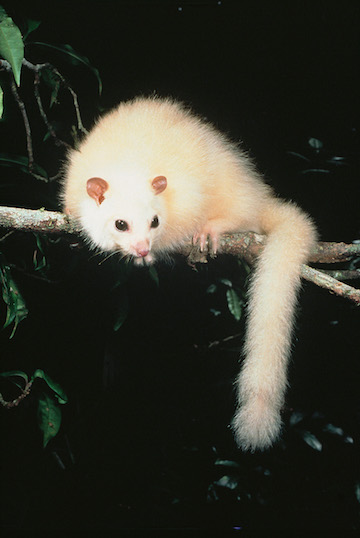
A white lemuroid ringtail possum at night. Image Credit: Bill Laurence
This isn’t an isolated case. The white lemuroid’s plight is echoed by rare and endemic species across Earth’s tropical rainforests. Over the past five years we’ve begun to realise just how sensitive tropical communities are to climate change — how a few extra degrees can mean the difference between a healthy ecosystem and a dying one. We’re starting to paint a picture of what Earth’s most biologically diverse forests will look like by the end of the century, and it isn’t a pretty one.
“We’re probably seeing [tropical warming] much more quickly now than we ever did in the past, a hundred to two hundred times faster,” Bill Laurence, a tropical ecologist at James Cook University told Gizmodo. “And you’ve got that compounded with land use change. If nature were in a boxing match with humanity, nature isn’t getting the occasional jab. It’s getting a whole flurry of punches at once.”
Can’t Take the Heat
There are reasons we’ve overlooked the impact of climate change in the tropics. For starters, there’s the reality that most of the world’s leading research institutions are located in temperate climates. Out of cost and convenience, we tend to do research in our backyard. There’s also a scientific case to be made for focusing on Earth’s cooler extremities, where the impacts of melting glaciers and thawing permafrost are so tangible.
And then there’s a little assumption we’ve bandied about for a long time: the tropics are already hot year-round, so a few extra degrees shouldn’t make much of a difference, right?
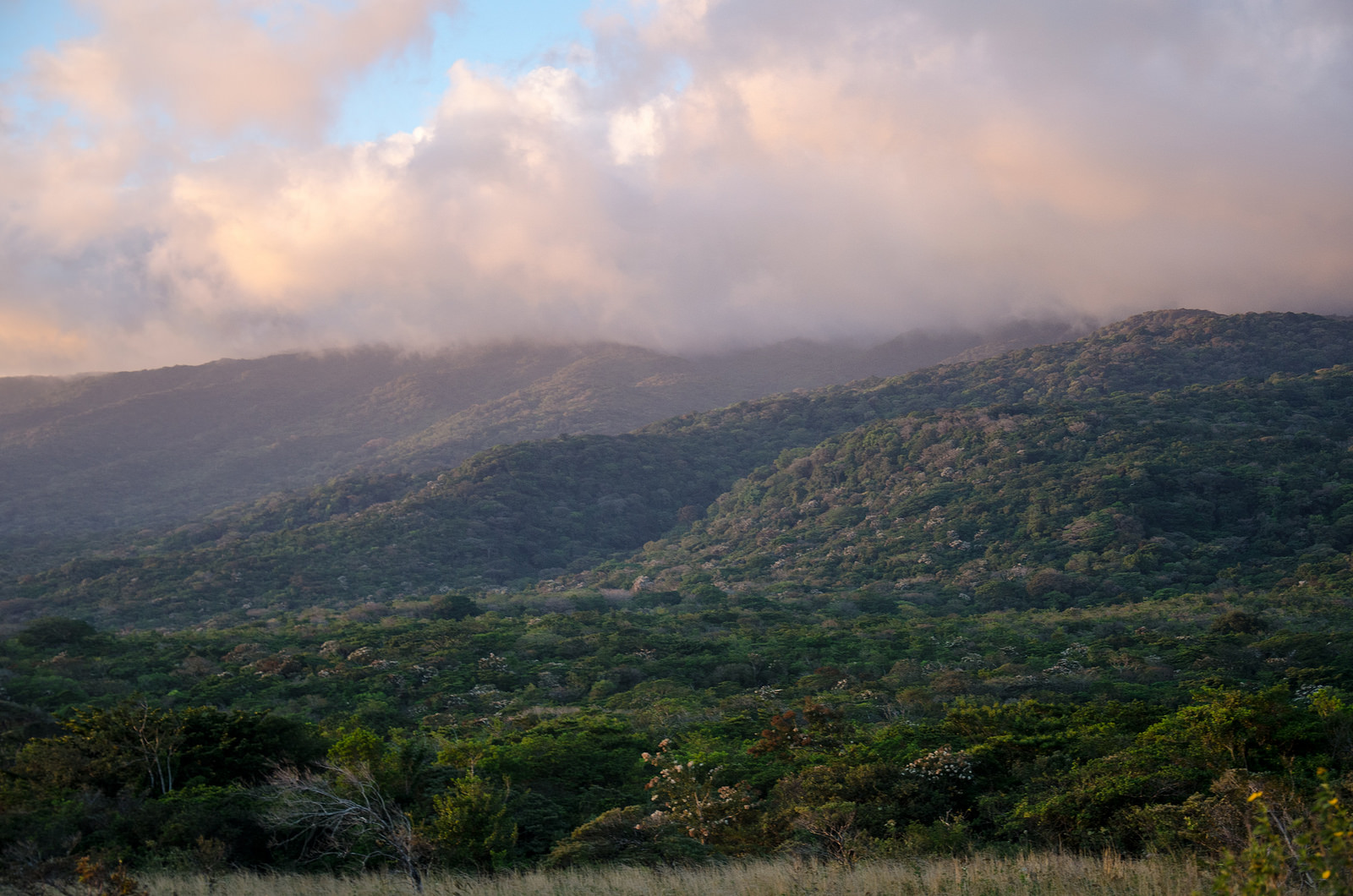
Guanacaste National Forest, Costa Rica, at sunset. Image Credit: thejaan/Flickr
That’s turning out to be dead wrong. As tropical biologists will tell you, their study sites are filled with thermal specialists, plants and animals that have enjoyed some of the most stable climates on Earth for thousands of years. And boring, predictable weather doesn’t exactly drive natural selection towards species that can handle change.
“The impact [of climate change] in the tropics is simply that the organisms are more sensitive,” tropical ecologist Dan Janzen told Gizmodo. Since the 1970s, Janzen has spearheaded one of the largest and most successful conservation projects in the world: restoring the Área de Conservacion Guanacaste, a 568 square mile patch of mountainous rainforest in northwestern Costa Rica. Janzen’s decades-long study of this region produced some of the very first insights into the temperature sensitivity of tropical species. He sums up their plight concisely: “When you ask these species to move, they can’t do it very well.”
“A polar bear could experience temperatures ranging from minus 40 degrees centigrade in the winter to plus 25 or 30 degrees in the summer,” Laurence said. “So, a range of 70 degrees during the course of the year. In the tropics, animals experience temperatures ranging from 20 to 35 degrees centigrade. You’re talking about a much smaller axis of temperature variation.”
In fact, the only significant “axis of temperature variation” in the tropics is vertical. For every 100m rise in elevation, temperatures drop by about 1C. From Puerto Rico to Costa Rica to Queensland, montane tropical forests are like compressed continents; a few steps up places you in a totally different ecosystem. Janzen likens tropical mountains to sky islands, noting that any organism living atop one will have to “descend through hell” to find another suitable habitat. “The consequence is that mountain ranges in the tropics are barriers, which means you stack up new species more readily,” Janzen said.
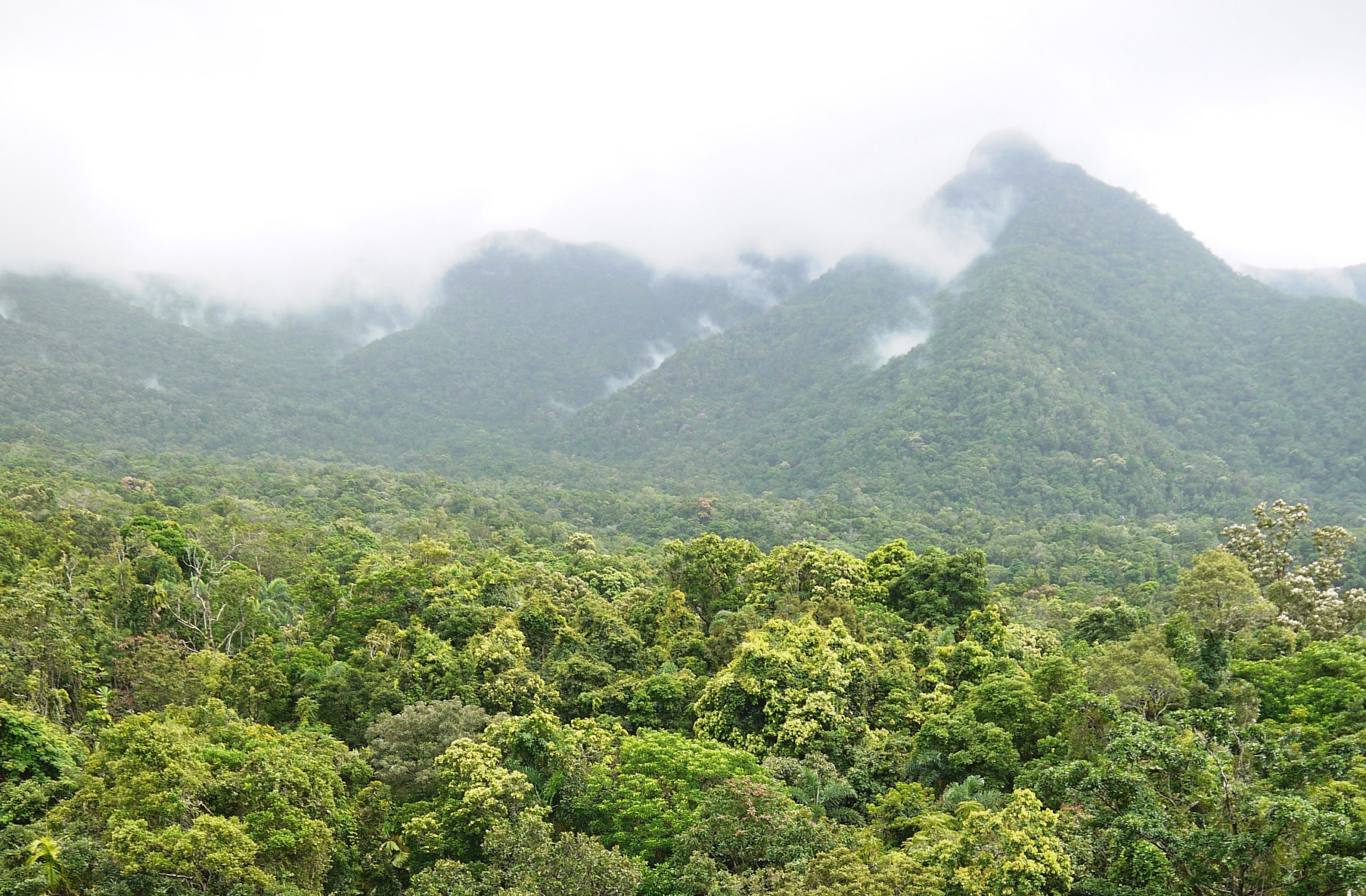
Mountains in Daintree rainforest, Queensland, Australia. Image Credit: Bill Laurence
It’s well known that montane tropical forests are among the most biologically diverse places on Earth. “If you look at maps of locally endemic species and use warm colours to illustrate areas with lots of them, the world’s tropical mountains look like they’re on fire,” Laurence said.
But rare, isolated species are also vulnerable ones. If their environment suddenly changes — if, say, a massive heatwave strikes — mountaintop species have nowhere to go.
That’s precisely why the white lemuroid possum on the verge of vanishing. When it gets just a few degrees too hot, the animal starts panting and losing water. But it can’t rehydrate properly during a heat wave, when the cloud bank has risen off the mountains.”They’re trapped in a situation where they’re very hot, can only cool by panting, and they sorta get caught between a rock and a hard place,” Laurence said.
“When you look at the stats over the last 50 years, the intensity of these heat waves has been slowly increasing,” Stephen Williams, a conservation biologist at James Cook University, told Gizmodo in an email. “The next hot summer with a dry year could be the end but its impossible to predict exactly when except to say it is likely anytime.”
The white lemuroid possum is a conspicuous victim of climate change, but its troubles are by no means unique. In a 2009 paper bleakly titled “Climate change in Australian tropical rainforests: An impending environmental catastrophe,” Williams modelled the shifting habitats of 65 regionally endemic rainforest animals under several different global warming scenarios. He found that if average temperatures rise by more than 2C — a very plausible amount of warming — extinction rates could spike. Beyond 3.5C of warming, nearly all endemic species have lost significant habitat. “Our results suggest that we may be facing an unprecedented loss of biodiversity in any montane biota” the paper concludes.
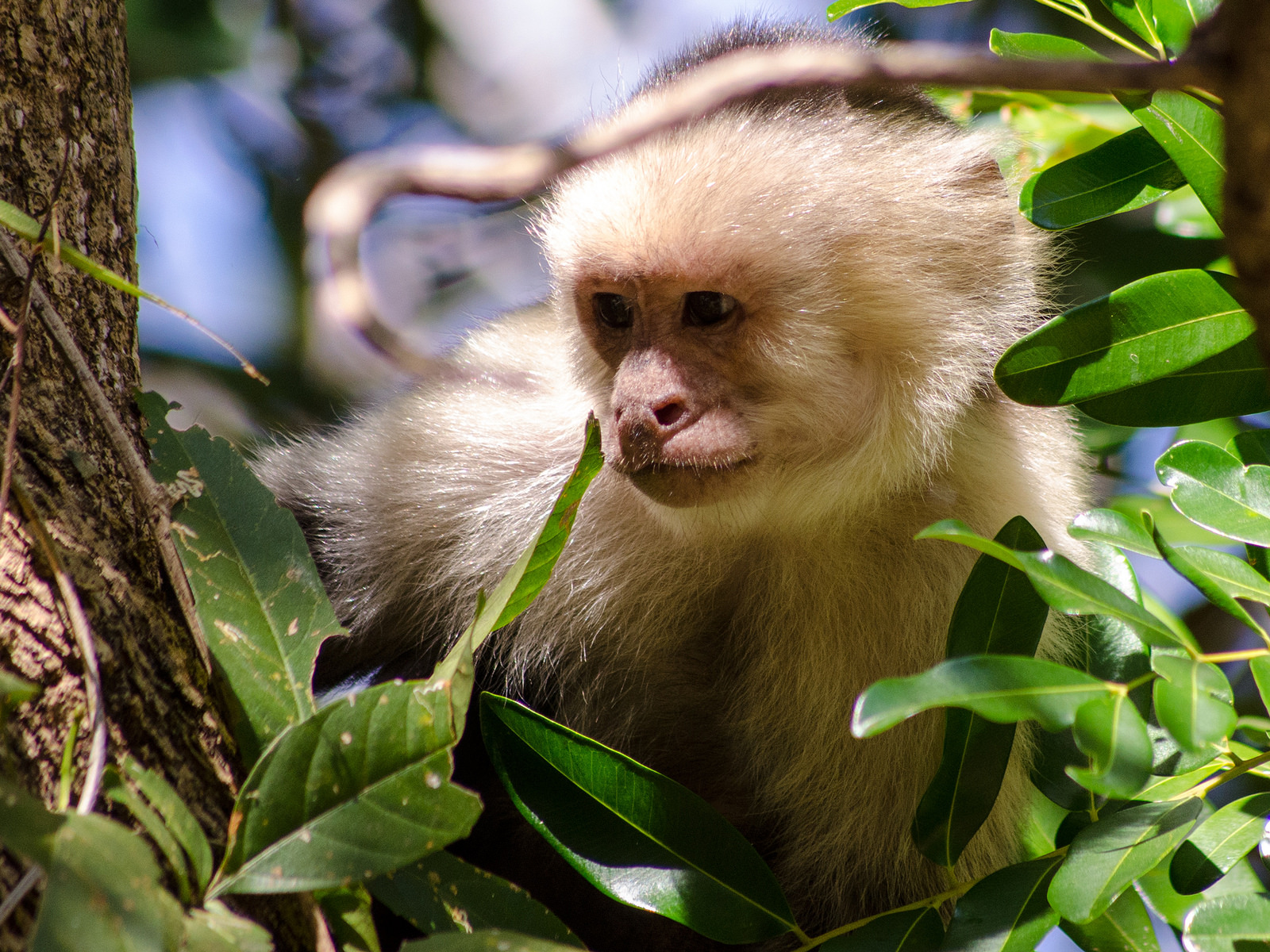
White faced capuchin in Costa Rica. Image Credit: thejaan/Flickr
And it isn’t just montane tropical species that are feeling the heat. Lowland rainforests, from the Amazon basin to the Congo, face a similar challenge. “If you live in the middle of the Amazon, and it’s getting hotter, you don’t know to head 3,219km east to the Andes,” Laurence said. “You’re just going to sit there and cook.” As Laurence points out, there are no analogs for a forest two degrees hotter than the Amazon. We’re sailing into uncharted territory.
“There are a lot of dynamics associated with this,” Janzen said. “It doesn’t mean we’re going to lose all of our species. What it does mean is that we’re going to see a lot of readjustment. A lot of changes in the relationship between organisms.”
“But,” he adds, “there are some that will just be gone.”
A Rainless Rainforest
It’s more than rising temperatures that are shaking up life in the tropics. Rainfall patterns are changing, too. And in the Amazon, the result could be devastating — both for tropical biodiversity and for global climate.
We picture Earth’s largest rainforest as, well, very rainy, but there’s actually a strong precipitation gradient across the Amazon, from warm and wet forests in the northwest, to seasonally dry stands in the southeast. In El Niño years, eastern Amazonia will even experience drought. The forests are quite well adapted to this, sending down deep roots to tap groundwater while putting out dense, leafy canopies to prevent moisture loss.
But no level of drought tolerance could prepare the Amazon for what happened in 2005.
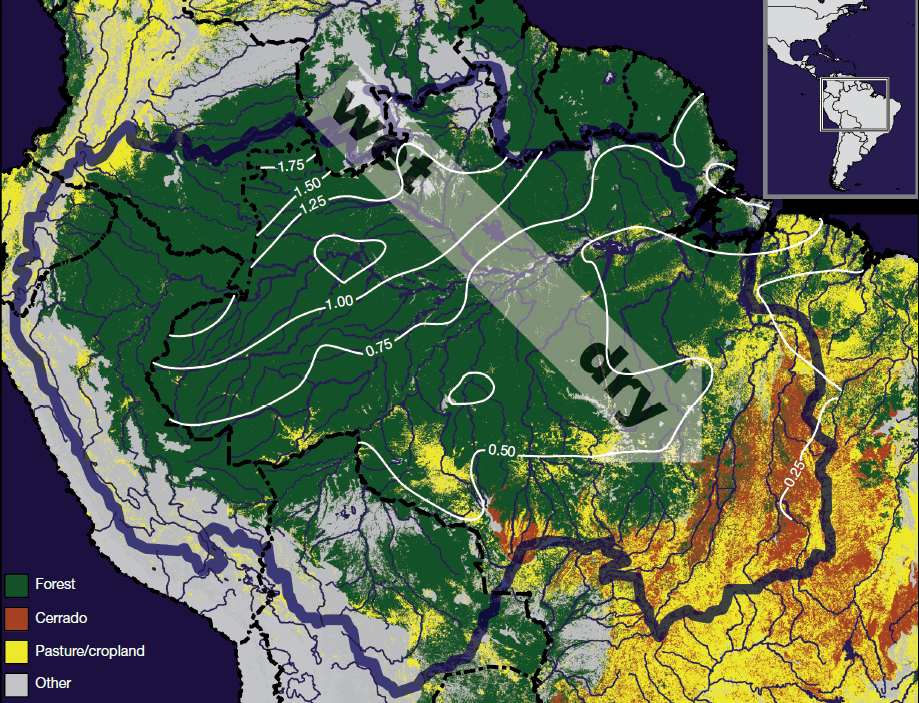
Climate gradient across the Amazon. The edges of the Amazon basin are demarcated by a thick blue line. Contour lines (white) are marked with mean daily precipitation (in mm) during the three driest months of the year. Colours indicate different types of land cover. Image Credit: Davidson et al. 2012
That year, exceptionally warm ocean waters in the tropical Atlantic — the same conditions that spawned Hurricane Katrina — pushed the rain-bearing intertropical convergence zone (ITCZ) northwards. The result? Southern Amazonia was plunged into the worst drought in living memory. Temperatures across large swaths of the southwest were 3-5C hotter than usual; rivers across the Amazon basin hit historic lows. Trees died by the millions, their decomposition sending sequestered carbon skyward. Studies would later estimate that the 2005 drought resulted in the loss of 1.6 billion tonnes of Amazonian carbon. That’s roughly the same amount of carbon generated by all human activity over the course of two months.

And it wasn’t just seasonally dry forests that were hit. Hyper-wet regions of the Amazon also went thirsty. Recounting the drought to The Guardian, Jose Edmee Brasil described how a “beach” had blossomed in the middle of his rainforest town of Humaita, located 644km south of Manaus. “Before this year I’d never seen the river less than 10 meters deep – now its only 2 meters,” Brasil said. “This is the biggest drought in our history.”
A massive tree in the northwestern Amazon. Image Credit : M.Stone, 2015
But the drought of 2005 wouldn’t be exceptional for long. An even worse dryspell struck in 2010, this one affecting half the Amazon basin — 3.1 million square kilometres of forest. Once again, Brazil saw widespread forest dieoffs; once again, billions of tons of carbon were lost. And as unusual as these two droughts were, they may be just a taste of what’s to come. Several of the Intergovernmental Panel on Climate Change (IPCC) global climate models predict a decrease in precipitation and an increase in the frequency and severity of droughts across the Amazon as the planet warms.
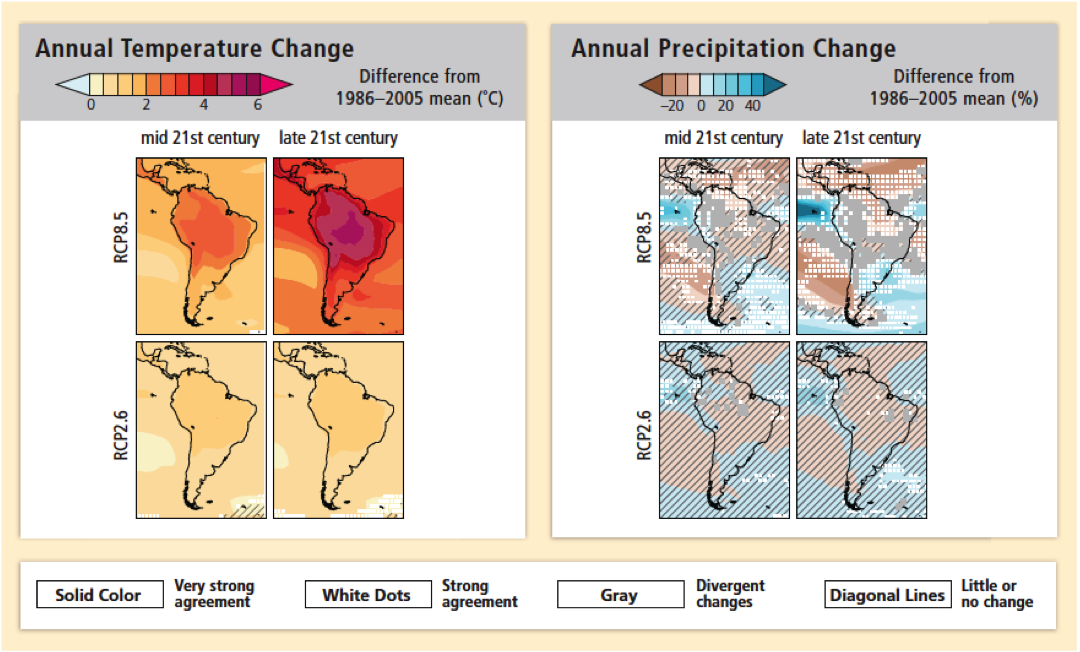
Predicted temperature and precipitation changes across South America under two different global climate scenarios. Under RCP 2.6, fossil carbon emissions are dramatically curtailed, limiting global warming to an average of 2C. RPC 8.5 is a high-emissions, business-as-usual scenario. In both cases, there is strong agreement among models that the Amazon will warm over the 21st century. Patterns of precipitation vary from model to model, but it is likely that some regions, such as eastern Amazonia, will become drier and more drought-prone. Image Credit: IPCC 2014
Not all parts of the Amazon will be affected equally by drought. According to tropical ecologist Eric Davidson, regions experiencing high deforestation are the most at-risk. That’s because the Amazon actually makes about a third of its own rain — trees release moist air that gets trapped and re-precipitated at the canopy. Less forest, less water. Meanwhile, the air above pasture lands warms up more quickly, sucking moisture out of the surrounding forest like a sponge.
Deforestation and drought interact in one other pernicious way: fire.
“If you have a forest next to a pasture or agricultural field, weeds and grass get in,” Davidson said. “That creates more of a fuel load that allows fire to spread.”
And once these forests start burning, we start to see nasty feedback loops. “The more often these droughts and fires come through, the more [tree] mortality there is, and you get a situation where the canopy is no longer closed,” Davidson said. The result? “Light gets in and dries out the understory, and that makes the forest more likely to carry fire.”
Any of the factors I’ve outlined here — warming, drought, fire, deforestation — would have damaging effects on its own. But taken together, this “flurry of punches” may be pushing Earth’s largest rainforest beyond its limits. In a 2012 Nature paper, Davidson and colleagues warn that environmental pressures could soon push the entire Amazon basin past a dangerous “tipping point,” one characterised by a “shift in the forest-savannah boundary” and a “large scale dieback of rainforest.”
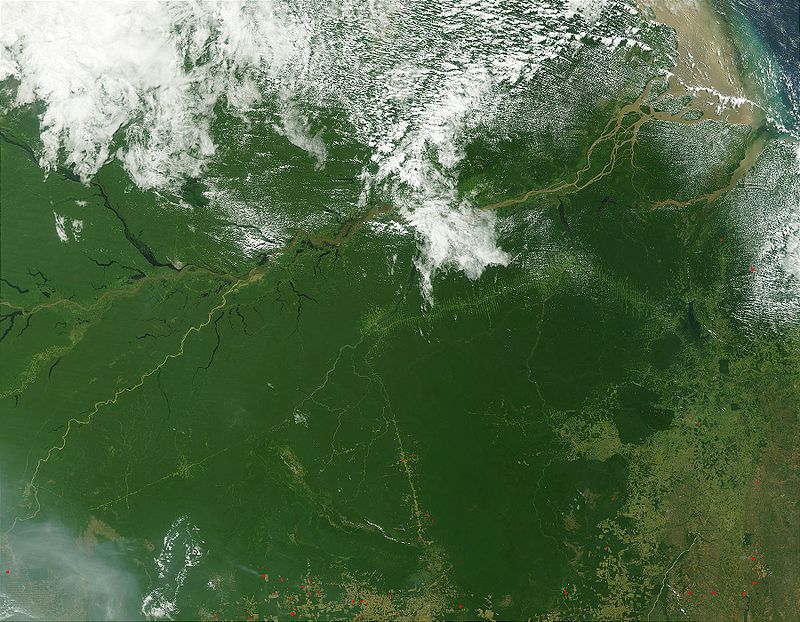
Satellite image of the northern Amazon basin captured in 2002 by NASA’s Moderate Resolution Imaging Spectroradiometer (MODIS) satellite. Deforestation and cultivation are evident in the south and southeast by lighter coloured terrain and regular, rectangular plots. Red dots indicate active fires. Image Credit: NASA
The Amazon basin contains an estimated 150 to 200 billion tonnes of carbon, making it one of the largest natural storehouses on the planet. But a transition to a less-productive, more fire-prone ecosystem could turn this rainforest into a major source of greenhouse gas emissions. “What’s interesting about tropical forests is they play a role in both driver and response [to climate change],” Florida State University tropical ecologist Stephanie Pau told Gizmodo. “Tropical forests store a lot of carbon and we’re losing them on a huge scale.”
Examining 321 Amazon forest plots since 1983, a study published in Nature concluded that the basin is soaking up less carbon every year than it used to. While the authors don’t explicitly point fingers, they do note that “the recent demonstration of Amazon-wide carbon sink suppression during a drought year indicates one possible driver.” A recent Science article puts it more bluntly: “If drought events continue,” the authors write, “the era of intact Amazon forests buffering the increase in atmospheric carbon dioxide may have passed.”
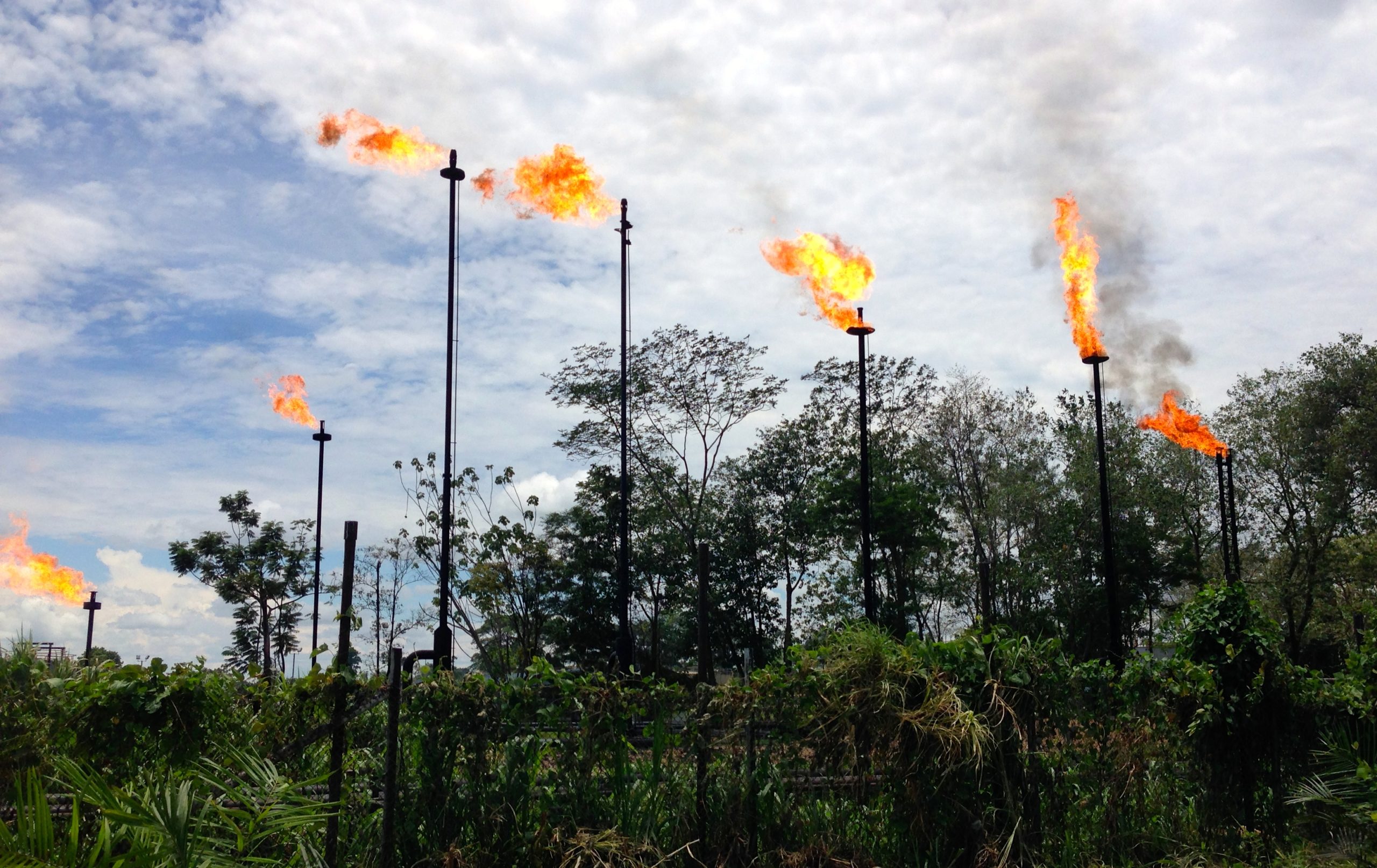
Natural gas fires near an oil drilling operation in northeaster Ecuador. Image Credit : M.Stone 2015
There’s still a lot of uncertainty about the future of tropical forests. The cycles and feedbacks we’re grappling with are complex and interconnected in ways we don’t fully understand. For instance, Pau’s work shows that rising temperatures and atmospheric CO2 concentrations are causing Panamanian trees to put out more flowers, but other studies from the same forests find that woody growth is declining over time. “We’re seeing a significant impact of warming, but the overall picture is confusing,” Pau said.
But uncertainty about the future isn’t a reason to sit tight and do nothing — quite the opposite. “There’s strong evidence that [the tropics] are going to see an increase in temperature and drought extremes,” Laurence said. “What we’re not able to do with current models is to know exactly where or when that’s going to happen.”
But, he continued: “I think the situation is frightening enough that even if you’re being extremely up front about what we think we know and don’t, it becomes quite apparent that we’re gambling with some pretty big things.”
Where Do We Go From Here?
Many ecologists will spend their career flitting from one exotic locale to the next. Janzen, on the other hand, has spent a lifetime getting to know every insect, lizard and tree on a single mountain. When he says climate change is affecting his world, he’s not riffing off academic papers. He’s speaking from experience.
“It used to be that I could win a lot of cases of beer betting on the first day of heavy rain,” he said. “Today, I wouldn’t even think about doing that.”
Or: “In the ’80s, there were no ants at a thousand meters elevation. But as the heat and drought travelled up the mountain, the ants went with them. If you’re a nesting bird, you’ve now got ants as predators.”
Or: “Every year, the cloud bank was just a little higher. Every year, more days where there are no clouds. Twenty years ago, if I saw a cloudless mountain, I’d run and take a picture. Today, it’s like that over and over again.”
Or: “This year, the rainy season just turned off a month early.”
These are Janzen’s realities. “Climate change is happening,” he said. “I could write a dozen academic papers on it, but it wouldn’t make a difference. What I need to do is think about how to minimise the impact.”

Red ants in Guanacaste forest. Image Credit: thejaan/Flickr
To that end, there’s little doubt in most ecologists’ minds. We need to conserve forests. And we need to do so intentionally, making sure to incorporate a range of environments so that species have places to move if local conditions shift.
“If you’ve got diverse terrain, stuff that’s wetter on one side of the mountains and drier on the other side, steep slopes and shallow slopes, different kinds of soils, you’ve got more options for the evolutionary and ecological change of these populations,” Janzen said. “You wanna save the Amazon? Buy the foothills of the Andes.”
It’s only in the last decade that the Brazilian government has succeeded in dramatically curbing deforestation. Since the mid 2000s, the rate of logging in the Amazon has fallen 70 per cent, thanks to better enforcement of the forest code and investment in remote sensing satellites that monitor the entire basin in real-time. Between 2004 and 2012, protected areas grew 68 per cent, now encompassing 47 per cent of the Brazilian Amazon. Many newly protected areas were carved out near active agricultural frontiers.
Through conservation, Brazil has done more to cut carbon pollution over the past decade than the entire European Union.
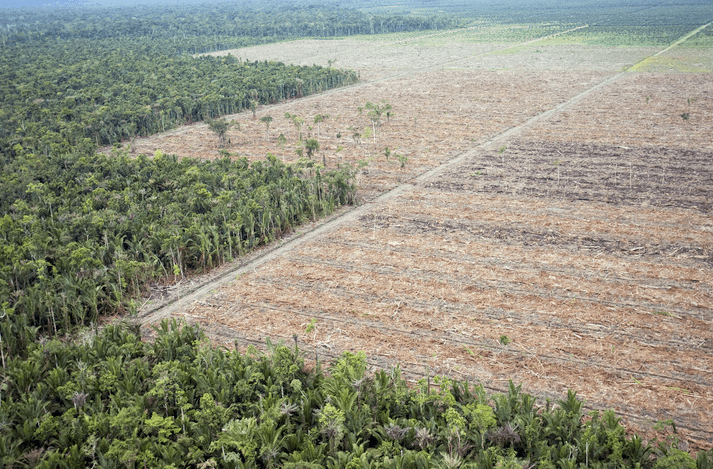
A large swath of Amazon rainforest has been leveled for agriculture. Image Credit: Wikimedia
Contrast the positive turn of events in the Amazon with the situation in Southeast Asia, which is experiencing a vicious swell in deforestation as the human population booms. According to the World Wildlife Fund, Vietnam and Thailand have each lost 43 per cent of their forest cover since 1973. For impoverished farmers in these countries, it’s still far more profitable to cut down forest than to leave it standing. “Tropical deforestation is a classic example of market failure,” Stephan Schwartzman of the US-based NGO Environmental Defence told National Geographic. “It’s urgent to find mechanisms to compensate forest peoples, and their governments, for the ecosystem services their forests provide.”
Indeed, while the value of intact tropical rainforests is almost incalculable, farmers in the tropics are suffering crop losses due to rising temperatures and drought. “We deal with a lot of farmers who ask about it [climate change] all the time,” Janzen said. “They’re all very aware that the dry season is getting drier and hotter.”
“The message I have to keep repeating is, this is not a drought, this is permanent,” he continued. “So don’t build your plans on next year being ‘normal’ again.”
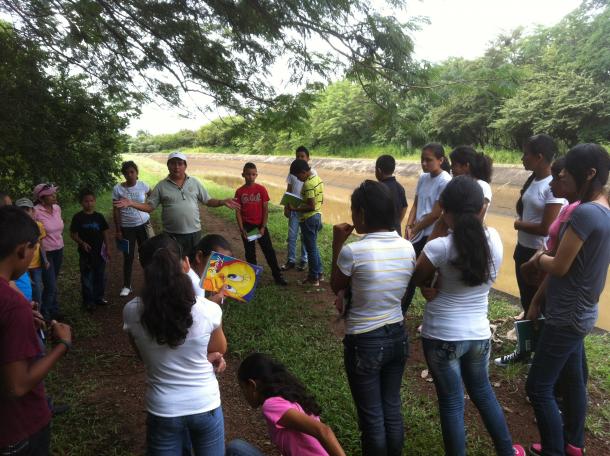
Kids at a field natural history class in Area de Conservacion Guanacaste. Image via Dan Janzen
The sooner the peoples of the tropics accept the reality of climate change, the sooner the world offers developing countries the incentives they need to protect their forests, the better the future looks. We won’t be able to save everything: some ways of life may be doomed, just as some rare tropical species are. But by facing climate change head on, those losses can be minimized.
“If you go to Guanacaste fifty years from now, it will have, maybe, the 70% of the flora and fauna it has today,” Janzen said. “We’re going to lose a big chunk. But 70% is a lot better than zero.”
References: Move over, polar bear. New Scientist | Laurance et al. 2004. Deforestation in Amazonia. Science | Davidson et al. 2012. The Amazon Basin in transition. Nature | Williams et al. 2003. Climate change in Australian tropical rainforests: An impending environmental catastrophe. Proceedings of the Royal Society B | Brienen et al. 2015. Long-term decline of the Amazon carbon sink. Nature | Lewis et al. 2011. The 2010 Amazon drought. Science | Ecosystems in the greater Mekong: Past trends, current status, possible futures. World Wildlife Fund | Nepstad et al. 2014. Slowing Amazon deforestation through public policy and interventions in beef and soy supply chains. Science | Last of the Amazon. National Geographic
